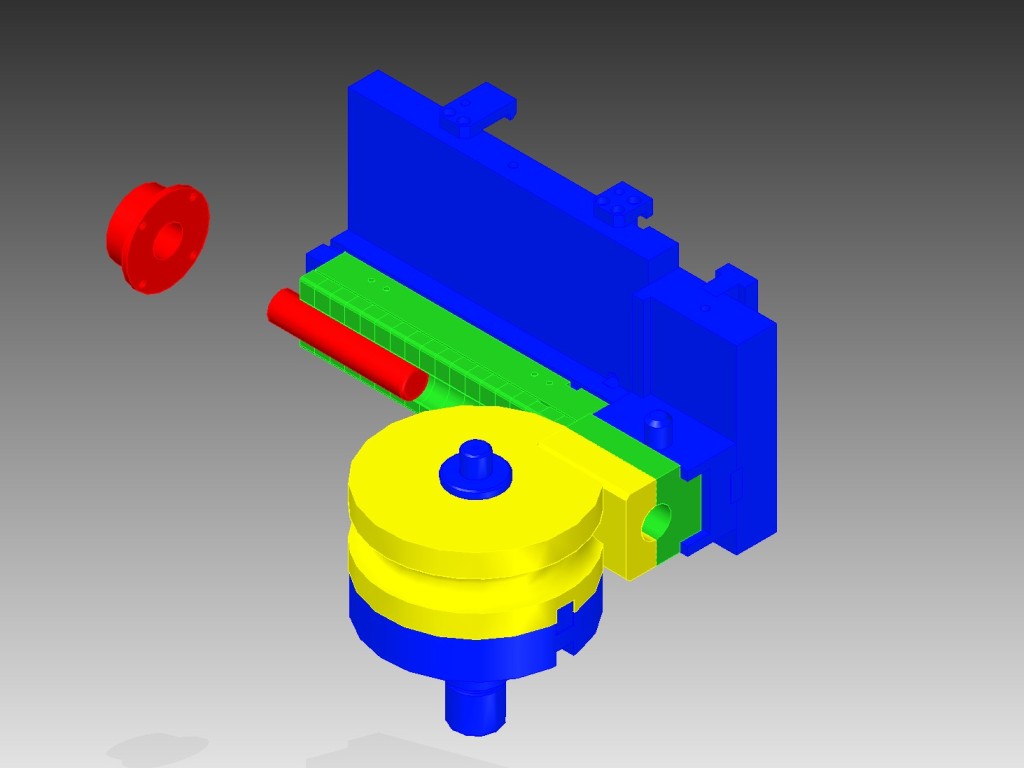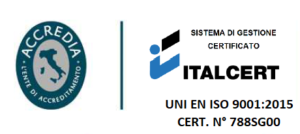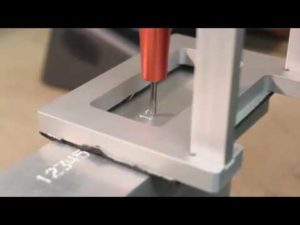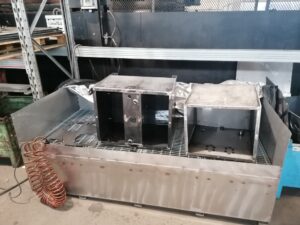BENT TUBES: FROM DESIGN TO PRODUCTION
The production of bent tubes is still a bit of an art today, in fact it is a more delicate process than others in metal process. This is due to the variables that can affect the process. Although today the technology present in offline CAM machines and software has simplified a lot.
We talk about bent tubes when radius is less than 200 mm (indicative). Instead for bends with higher radius we refer to calendering process. Nevertheless, today many machines can make both bending and calendering. However in this post we focus on the pipe bending and its process.
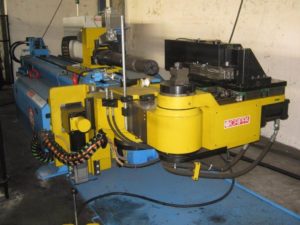
Design of bent tubes
The design of bent tubes must first consider the capabilities of the tube bender, the availability of molds and the tolerances.
1. Bending force and its modulation.
It is important to know the limits of the machine so as not to find yourself unable to produce the piece. The bending capacity does not depend on pure power but it is influenced by the radius of curvature (larger requires less force) and by the ability to modulate the effort during the entire bending phase. For that the new electric bending machines have opened a new frontier compared to traditional hydraulics because it’s easier to modulate them.
In addition to electrification, the other noteworthy innovation of recent years are machines with both left and right head rotation. That is, they can bend in both directions giving a very high degree of freedom both in design and in execution that was previously unimaginable.
2. Tools
A tube bending machine works with a constant or fixed radius. That is to say, the radius is determined by the matrix. So each mold responds to these parameters: pipe section, bend radius and pipe thickness. If changing just one of these factors probably you need a new tool, with additional costs.
Standard dies must block the pipe on both sides, so between one bend and the other there should always be a straight section of at least about 100 mm. If not, specific molds must be designed to allow for close bends.
Another encumbrance must to be considered is the initial and final stretch straight where you clamp the pipe to manage the tube during the entire processing. In fact the tool “occupy” part of the tube and you must be kept in mind. Alternatively, if the rectilinear part is not sufficient, after the bending, the excess part will be trimmed.
Multi-radius. Modern machines can also accommodate more than one mold at the same time, this means being able to create the piece with different radius. On average, 2 or 3 molds can be accommodated. However, each mold has a fixed radius but you have more molds so you choose which one to use, thus obtaining bent tubes with different radius.
3. Tollerances
As in all projects, tolerances are fundamental as they define the cost of the part. Especially for bent tubes which, as mentioned, are subject to several variables, each of which can introduce an error in the machining.
If we focus on the tolerances of a machine (we forget now the material variable) it is reasonable to consider these ranges:
- Coarse: angular tolerance ± 1 °; linear tolerance ± 0.5mm
- Normal: angular tolerance ± 0.5 °; linear tolerance ± 0.5mm
- Fine: angular tolerance ± 0.2 °, linear tolerance ± 0.1mm
Electric machines are more precise than hydraulic ones, they belong to the latest generation and are not subject to oil temperature variation.
4. Aesthetic finish
To have a good aesthetic result, without bending defects, radius must be at least 1.5 times the section (for stainless steel and aluminum the limit increases to 2). Under these values it is possible with specific tools
Today you can go as far as curves with a radius in relation to 0.8 the section of the profile. Results achievable only with electric tube benders and in optimal conditions of the machine, equipment and material. However, it remains a remarkable achievement when compared to the limits of just 10 years ago.
5. Alternatives:
There are alternatives to the cold bending technique if for various reasons the adoption of this technology is difficult:
- cold forging
- hot forging and casting
- hydroforming
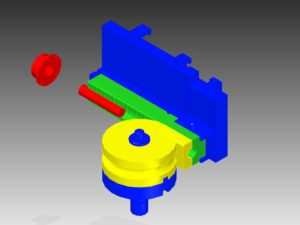
Linear development calculation for bent tubes
Some modern software are able to directly calculate the development of the piece, alternatively one of the most used formulas is:

L= summation of all the straight sections r and of all the lengths of the arcs a.
L= total length / or= length straight sections / a= length arc
While straight sections are easy to calculate, for arcs the following formula is followed:
a = 0.01745 x Rm x α
Rm= radius in the median section / α = bending angle (between 0° e 180°)
However, it is generally a good idea to always carry out a practical test (sample) before moving on to mass production. Furthermore, if the part has several bends, or bend less than 90 °, the development could vary significantly from the theoretical calculations.
The problem is more pronounced for square tubes, rectangles or special profiles than for round ones. Round tubes have a constant resistant section and do not have the problem of the position of the weld seam and the exact size of the corner radius.
In fact, many more variables come into play than the bending sheet metal process. First of all, pickled tubes are not always available, therefore less noble material. In addition, the position of the weld seam, the exact thickness and the radius of the corner affect the elastic return of the piece.
Some problems can be limited with the use of more valuable materials (for example tubes without welding seam) but with an increase in costs. For example, if available, prefer its alter ego E235 + N to S235JR steel.
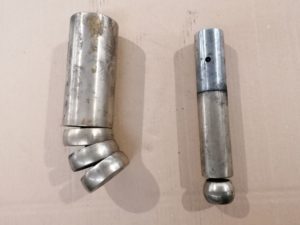
Tips for the tube bending machine setup
Firstly, to ensure production repeatability, it is important to know the elastic modulus of the material. It is suggested to use rods, for each batch, with a variance of the elastic modulus of ± 2%, even better if they come from the same pipe factory.
During the process, the first golden rule is to verify that the tube does not slip during the entire bending phase. For this reason, sometimes the molds have slightly rough surfaces to increase their grip, especially if we are bending stainless steel pipes.
Furthermore, all the components of the mold must not have any slippage between them. For this reason it is advisable to always prefer mechanical locking.
Core
For the tighter curves, the use of the core is essential. It starts with a fixed core, the simplest one, and then moves on to nail or jointed cores. To be able to “enter” more and more into the curve.
The canonical starting position of the fixed core should be 5mm in front of the center of rotation (theoretical start of the curve), and its adjustment makes the difference on the bending result.
To extract the core, excellent lubrication is required with the use of anti-seizing oils. Obviously the effectiveness of the core is greater the more accurate it is with respect to the section. This unfortunately collides when the tube does not have a calibrated thickness and beyond that when the size and position of the weld bead is not constant.
To support the effectiveness of the core, the use of the counter slide is essential for the most demanding bends. The counter slide must be made of self-lubricating material and is installed in the internal part of the curve (opposite to the sled)
Other adjustments
Fine adjustments can be made on the back sled: anticipating or postponing its action timing. Or increase the pushing force of the rear cart, usually one starts without pushing (therefore passive way) to switch to active pushes if the material tears.
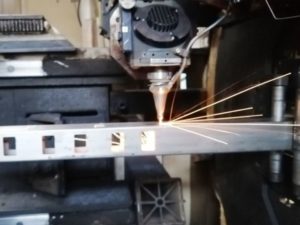
Integration between tube bending machine and laser cutting.
The integration between the tube bender and the tube laser cutting make easier the production of many pieces. Briefly, it is necessary to distinguish two cases.
Cutting before bending
The most widespread and cheapest solution. In this case the tube is processed (drilled and shaped) before bending. The important limits are the tolerances between holes, considering the tolerances deriving from bending and not from laser cutting. In addition sometimes it’s neccsary have a longer pipe to allow to process with bending machine.
Cutting after bending
More accurate but more expensive solution. You use a 3D laser cutting station and not a tube laser cutting machines. The tube is drilled and shaped after bending so the tolerances are those typical of the laser cutting machine and not of the tube bender.
Agrital’s know how
Agrital has been manufacturing bent tubes for over 20 years, and is mainly specialized in the processing of structural and construction steel. It processes diameters between 20 mm and 80 mm, or equivalent square and rectangle profiles whose diagonal is less than 80 mm.
We produce bent tubes also in small and medium batch.
It’s also a producer of welding parts, in particular welded hydraulic tanks, leakage tested. In addition railings and metal casing.

